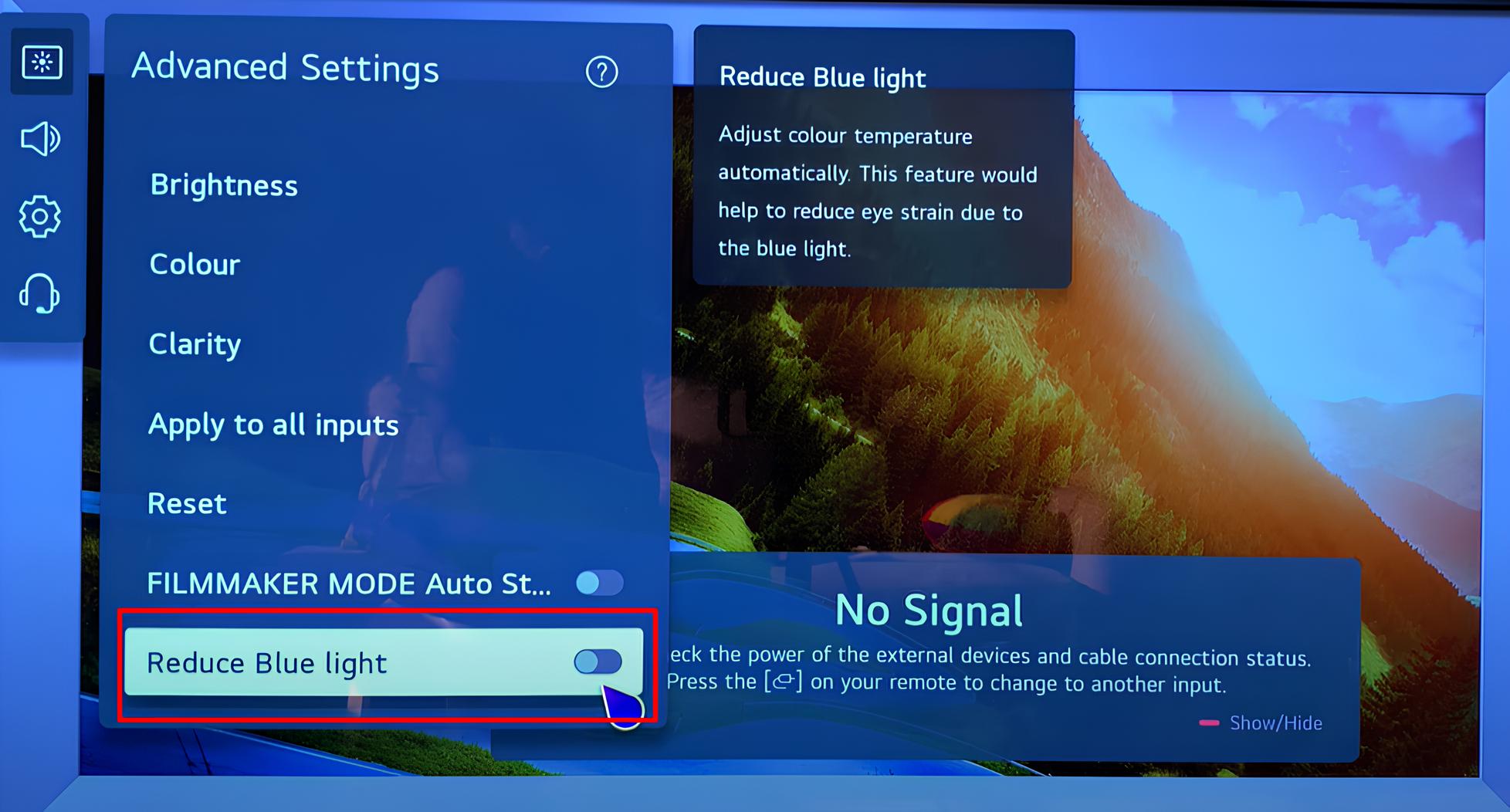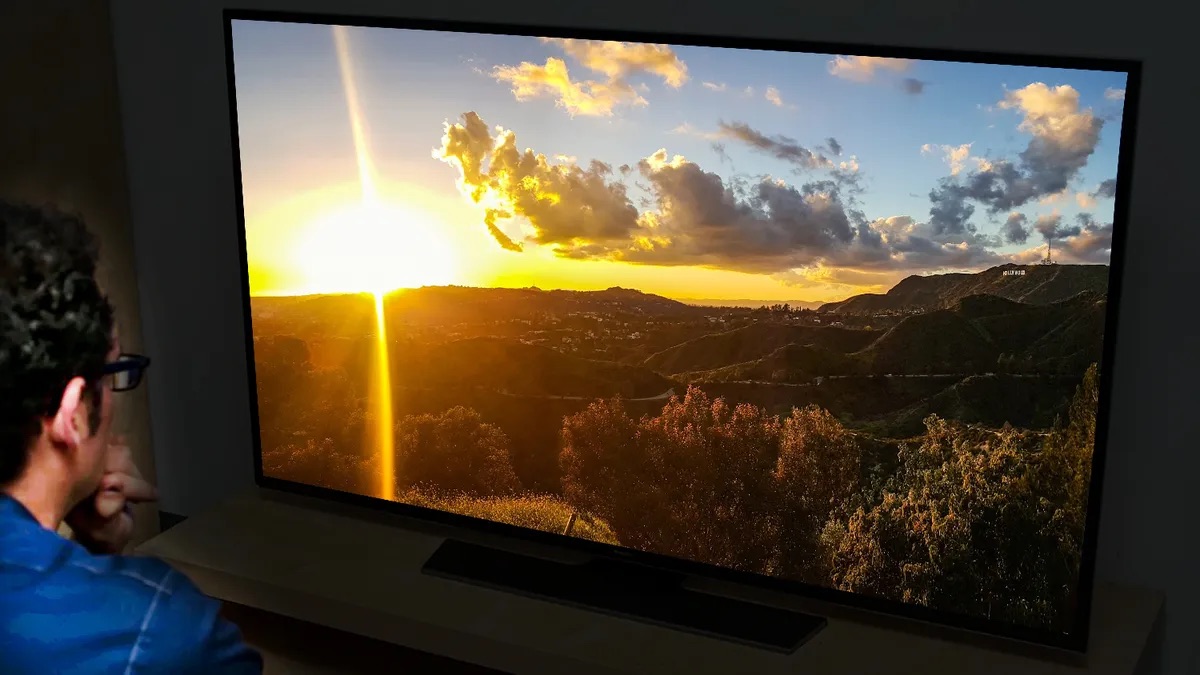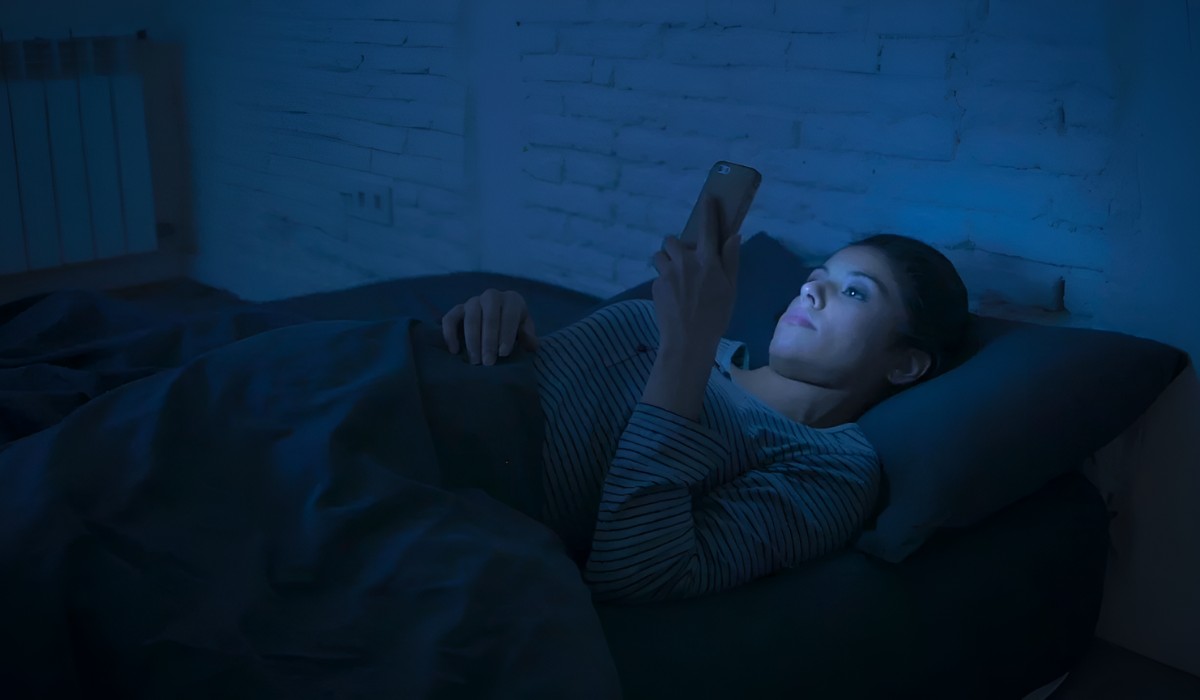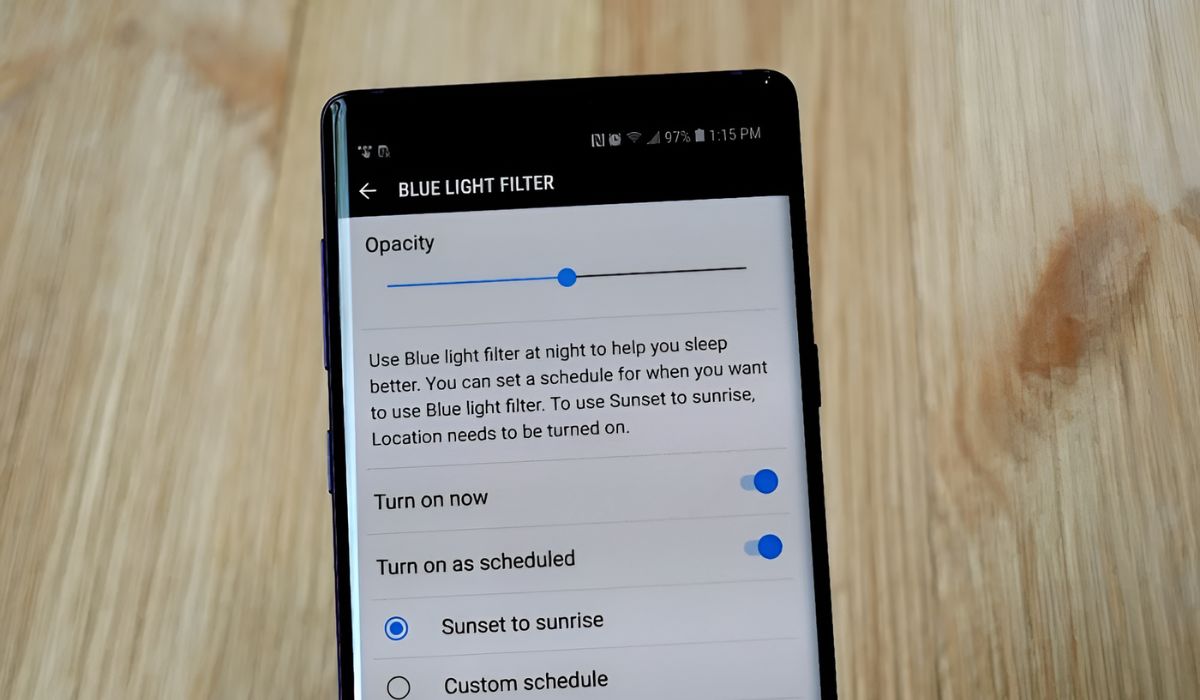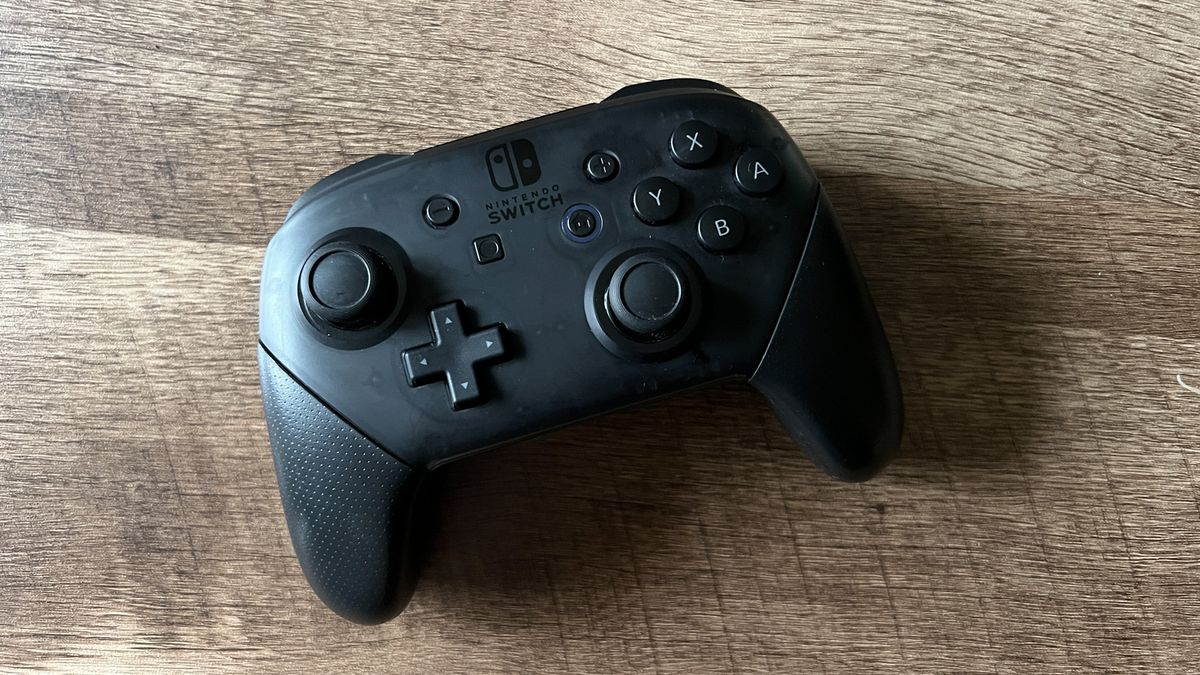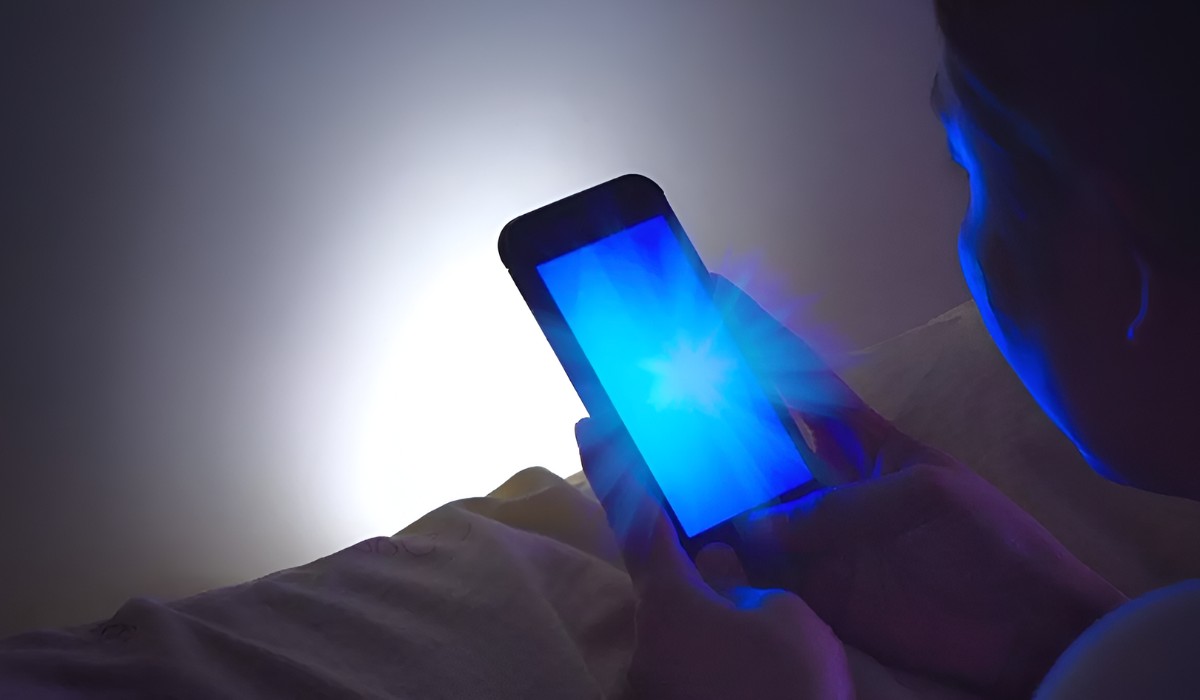Introduction
Welcome to the era of digital entertainment, where our daily lives are intertwined with technology. As we immerse ourselves in the captivating world of television, it's essential to consider the impact of blue light emission on our well-being. The prevalence of high-definition TVs and prolonged screen time has raised concerns about the potential adverse effects of blue light exposure. In this article, we will explore the significance of understanding and managing blue light emission from TVs, providing you with valuable insights and practical tips to safeguard your visual comfort and overall health.
With the increasing reliance on digital devices, including televisions, smartphones, and computers, our exposure to blue light has become a subject of growing interest. Blue light, a high-energy visible (HEV) light, is emitted not only by natural sources such as the sun but also by artificial sources like LED and LCD screens. While blue light is an integral component of the visible light spectrum and plays a crucial role in regulating our circadian rhythm and boosting alertness during the day, excessive exposure, especially during evening hours, can disrupt our sleep patterns and lead to digital eye strain.
As we delve into the realm of TV settings and the impact of blue light emission, it's important to recognize the significance of striking a balance between enjoying our favorite shows and safeguarding our visual well-being. By understanding the implications of blue light exposure and familiarizing ourselves with effective strategies to mitigate its effects, we can optimize our TV viewing experience without compromising our health.
In the subsequent sections, we will delve into the intricacies of blue light emission from TVs, unraveling the science behind its impact on our eyes and overall health. Furthermore, we will equip you with practical tips for disabling or minimizing blue light emission, empowering you to make informed decisions and take proactive measures to enhance your visual comfort while indulging in the immersive world of television entertainment. So, let's embark on this enlightening journey to unravel the mysteries of blue light and discover the art of optimizing TV settings for a healthier viewing experience.
Understanding Blue Light Emission from TVs
In the realm of television technology, the concept of blue light emission holds significant relevance, shaping our viewing experiences and influencing our visual well-being. When we gaze at our TV screens, we are exposed to a spectrum of light, including blue light, which is known for its high-energy visible (HEV) properties. This form of light, with its short wavelengths and high energy, plays a pivotal role in the visual perception of colors and the regulation of our circadian rhythm.
The prevalence of LED and LCD TVs has amplified our exposure to blue light, prompting a closer examination of its potential impact on our eyes and overall health. Unlike ultraviolet (UV) light, which is absorbed by the cornea and lens, blue light penetrates deep into the eye, reaching the retina. This direct interaction raises concerns about the cumulative effects of prolonged blue light exposure, especially during evening hours when our natural defense mechanisms are subdued.
Scientific studies have shed light on the intricate relationship between blue light and its influence on our sleep patterns. Exposure to blue light, particularly in the evening, can disrupt the production of melatonin, a hormone crucial for regulating the sleep-wake cycle. This disruption not only leads to difficulties in falling asleep but also compromises the quality of our rest, impacting our overall well-being.
Furthermore, the prolonged viewing of TV screens, especially in low-light environments, can contribute to digital eye strain, also known as computer vision syndrome. Symptoms such as eye fatigue, dryness, blurred vision, and headaches may manifest due to extended exposure to the glare and flicker of screens, coupled with the effects of blue light on the eyes.
As we navigate the intricate landscape of blue light emission from TVs, it's essential to recognize the evolving nature of technology and its impact on our daily lives. By gaining a deeper understanding of the properties and potential effects of blue light, we can embark on a journey towards optimizing our TV settings and adopting proactive measures to mitigate its impact.
In the subsequent section, we will delve into practical tips for disabling or minimizing blue light emission from TVs, empowering you to take charge of your visual comfort and well-being while indulging in the captivating world of television entertainment. Let's embark on this enlightening journey to unravel the mysteries of blue light and discover the art of optimizing TV settings for a healthier viewing experience.
Tips for Disabling or Minimizing Blue Light Emission
When it comes to safeguarding your visual comfort and well-being while enjoying TV entertainment, implementing effective strategies to minimize blue light emission is paramount. By leveraging the following tips, you can create an optimal viewing environment that mitigates the potential impact of blue light on your eyes and sleep patterns.
1. Adjusting TV Display Settings
Take advantage of your TV's display settings to reduce blue light emission. Many modern TVs offer a "blue light filter" or "eye care" mode, which can be activated to diminish the intensity of blue light. Additionally, explore the color temperature settings and opt for warmer tones, such as "warm" or "low color temperature," to lessen the blue light output while maintaining visual clarity.
2. Utilizing Ambient Lighting
Incorporate ambient lighting into your TV viewing area to create a balanced visual environment. Soft, indirect lighting can help counteract the harshness of screen glare and minimize the strain on your eyes. By reducing the relative brightness of the TV compared to the surrounding light, you can alleviate the impact of blue light on your visual comfort.
3. Time-Based Adjustments
Consider making time-based adjustments to your TV settings, particularly during the evening hours. As the day transitions into night, the impact of blue light on your circadian rhythm becomes more pronounced. Take advantage of features such as "night mode" or "auto-adjusting brightness," which automatically reduce blue light emission as the day progresses, promoting a more soothing viewing experience.
4. Blue Light Filtering Accessories
Explore the option of utilizing blue light filtering accessories, such as screen overlays or specialized glasses. These accessories are designed to selectively block or absorb blue light, thereby reducing its impact on your eyes. By incorporating such accessories into your TV setup, you can proactively minimize blue light exposure and enhance your visual comfort.
5. Scheduled Breaks and Eye Care Practices
Incorporate regular breaks and eye care practices into your TV viewing routine. Engage in the 20-20-20 rule, where every 20 minutes, shift your gaze to an object at least 20 feet away for 20 seconds. This simple practice can alleviate eye strain and reduce the cumulative impact of blue light exposure.
By implementing these practical tips and integrating them into your TV viewing habits, you can effectively disable or minimize blue light emission, fostering a healthier and more comfortable visual experience. As you embark on this journey towards optimizing your TV settings, remember that small adjustments can yield significant benefits for your visual well-being.
Conclusion
In the realm of television entertainment, the pervasive influence of blue light emission has prompted a heightened awareness of its potential impact on our visual comfort and overall well-being. As we navigate the intricacies of modern TV technology, it becomes increasingly crucial to equip ourselves with the knowledge and strategies to mitigate the effects of blue light exposure.
By delving into the science behind blue light emission from TVs and exploring practical tips for disabling or minimizing its impact, we have embarked on a journey towards fostering a healthier and more comfortable viewing experience. The significance of understanding the properties and potential effects of blue light cannot be overstated, as it empowers us to make informed decisions and take proactive measures to safeguard our visual well-being.
As we reflect on the insights gleaned from this exploration, it becomes evident that the art of optimizing TV settings extends beyond mere technical adjustments. It encompasses a holistic approach to creating an environment that balances our enjoyment of captivating visuals with the preservation of our visual health. By leveraging the adjustable display settings, incorporating ambient lighting, and embracing time-based adjustments, we can curate an optimal viewing experience that minimizes the impact of blue light on our eyes and sleep patterns.
Furthermore, the integration of blue light filtering accessories and the adoption of scheduled breaks and eye care practices serve as invaluable tools in our quest to mitigate the potential effects of blue light emission. These proactive measures not only alleviate the strain on our eyes but also contribute to a more sustainable and enjoyable TV viewing routine.
As we conclude this enlightening journey, it is imperative to recognize that the management of blue light emission from TVs is a dynamic and evolving endeavor. With advancements in technology and a growing understanding of visual well-being, the landscape of TV settings and blue light management will continue to evolve. By remaining vigilant and receptive to emerging strategies and innovations, we can adapt our approach to optimizing TV settings, ensuring that our viewing experiences remain enriching and comfortable.
In essence, the journey towards disabling or minimizing blue light emission from TVs transcends the realm of technical adjustments; it embodies a conscious commitment to nurturing our visual well-being. By integrating the insights and tips shared in this exploration into our TV viewing habits, we can embark on a path that harmonizes the allure of television entertainment with the preservation of our most precious sensory asset – our vision.







